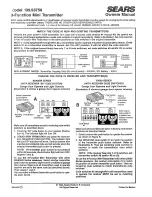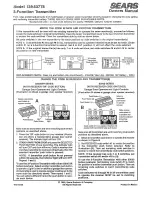
USER MANUAL
PTM 216B – BLUETOOTH
®
PUSHBUTTON TRANSMITTER MODULE
© 2022 EnOcean | www.enocean.com
F-710-017, V1.0
PTM 216B User Manual | v1.0 | February 2022 | Page 81/86
C.1.6
Variable internal parameters
The RFC3610 implementation in PTM 216B derives four internal parameters – Nonce, A0,
B0 and B1 – based on the telegram specific input data and the constant internal parame-
ters.
These variable internal parameters - listed in Table 14 below - are then used together with
the security key to calculate the actual signature.
Parameter
Comment / Description
Example
Nonce
13 byte initialization vector based on
concatenation of source address, sequence
counter and padding, see 4.7.1
FE19000015E2D00A0000000000
A0
A0_Flag
followed by
Nonce
followed by 2 byte
0x00
01FE19000015E2D00A00000000000000
B0
B0_Flag
followed by
Nonce
followed by 2 byte
0x00
(no message to encode)
49FE19000015E2D00A00000000000000
B1
Input Length
followed by I
nput Data
fol-
lowed by 5 / 4 / 3 / 1 byte of
0x00
padding
(for optional data size = 0 / 1 / 2 / 4 byte)
00090CFFDA03D00A0000030000000000
Table 14 – Variable internal parameters
C.2
Algorithm execution sequence
The algorithm uses the variable internal parameters
A_0
,
B_0
,
B_1
together with the private
key to generate the authentication vector
T_0
using three AES-128 and two XOR opera-
tions. The algorithm execution sequence is shown in Figure 45 below. The first four bytes of
T_0
are then used to authenticate PTM 216B telegrams.
Figure 45 – Authentication algorithm sequence






































